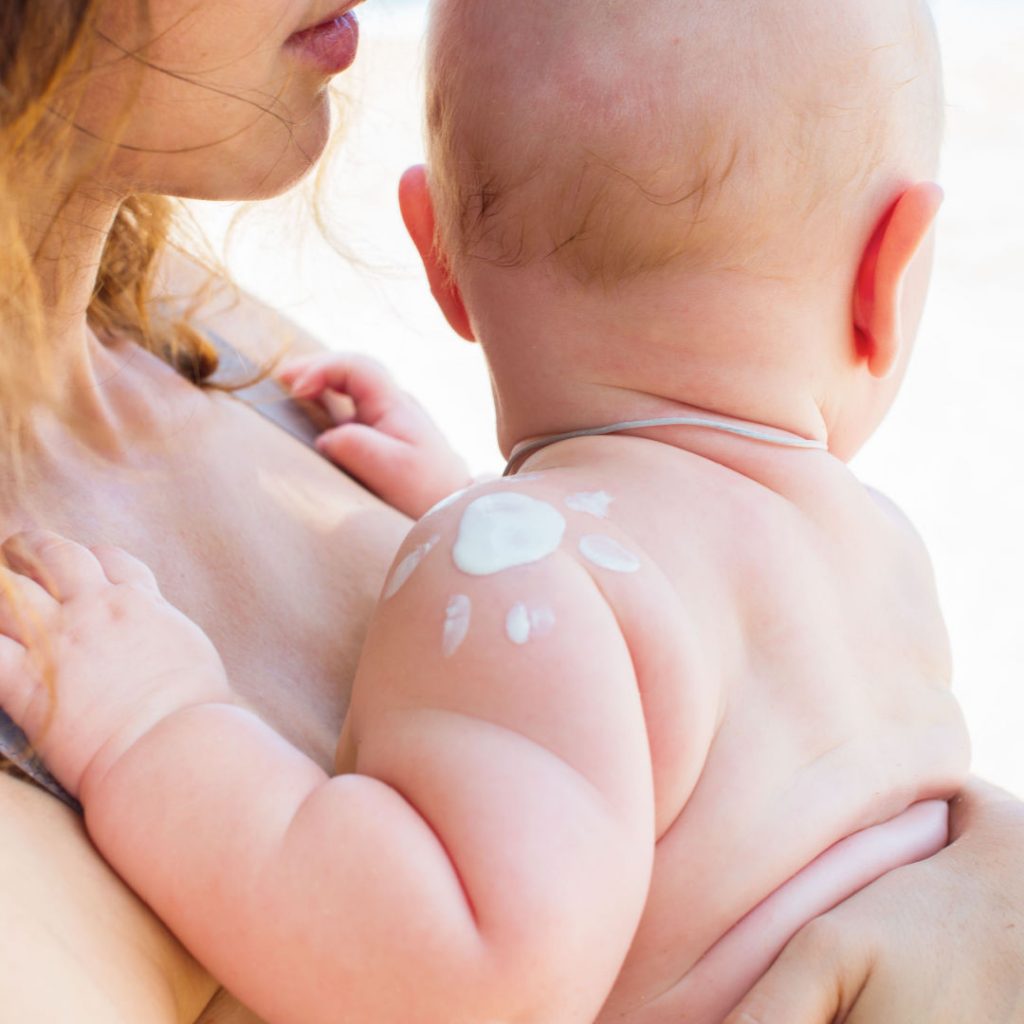Babies have thin, sensitive skin which can burn very easily, even on cloudy days when it’s easy to think there’s very little risk of sun damage. However overcast the day though, ultraviolet (UV) rays can still cause burning.
The more sun exposure in early life, the greater the risk of skin cancer as we age. Fortunately, there’s a lot we can do to protect our baby’s skin from sun damage and reduce their exposure to ultraviolet (UV) radiation.

What, me?
Think about what you do to protect your own skin so you can role model, even from your baby’s earliest days, what it means to be ‘sun safe’. We’re often so focused on looking after our children that we overlook our own self-care.
Sun protection basics for babies
Use clothing which covers as much of their skin as possible. Clothing with a close weave, rather than an open weave, will help to create a physical barrier to block the sun’s rays. Loose fitting clothes and wraps will help to keep them cool. Check the labels of clothing to learn what level of protection they offer. At least UPF 15 provides good protection, UPF 50 is considered excellent protection.
Use close fitting sunglasses on your baby to protect their eyes. Toy or novelty glasses can look cute but don’t have any protective benefits. Instead, look for sunglasses that cover as much of the eye as possible and meet the Australian Standard for UV protection. Choose sunglasses with an eye protection factor (EPF) of 9 or 10.
Always place a hat on your baby’s head when you go outside. Look for a hat which casts a broad shadow over their face, ears, neck and chest. A chin strap or elastic adjustor/toggle around the crown of the hat can help to keep it on. Keep spare hats in the car, in your baby’s pram and by the front door. One hat is rarely enough and it’s easy to be caught out without one.
Use a broad-spectrum sunscreen on any exposed areas of your baby’s skin. Use a sunscreen which is suitable for babies/children and apply 20 minutes before going outside. Reapply every two hours or more often if directed by the manufacturer. Choose a water-resistant sunscreen if you’ll be taking your baby swimming. Check the expiry date on the sunblock and throw away any that is unused.
Try to avoid going outside between the hours of 9 am – 4 pm. Use a phone app, e.g., SunSmart to know when the UV level is 3 and above. This is when burning and sun damage is more likely to happen.
Keep your baby in the shade when you can. But be mindful that UV rays can be reflected off the ground and still cause burning.
5 Top Sun Safe tips
- Widespread use of sunscreen is not recommended for babies aged less than six months of age. A safer option is to use physical protection such as shade, clothing, hats, sunglasses and staying inside out of the sun.
- Before using any sunscreen, try it on a small area of your baby’s skin first. That way, you’ll be able to test for any reactions or sensitivity. Use sunscreen which is labelled as being suitable for sensitive skin and suitable for babies and children.
- Avoid covering your baby’s pram with a cover which blocks you being able to check easily on your baby. Fabric and plastic covers can block air-flow so the temperature inside the pram rises. A mesh cover with at least a 3.3 UPF will block around 70% of UV rays.
- Store sunscreen under 30°C – avoid storing it in the car or outside. Check the crimp for the expiry date and use within the safe timeframe.
- Remember the slip (clothing), slop (sunscreen), slap (hat), slide (sunglasses) message around sun protection. It applies for all ages and stages of life.
Written for Infacol by Jane Barry, Midwife and Child Health Nurse, January 2023.



